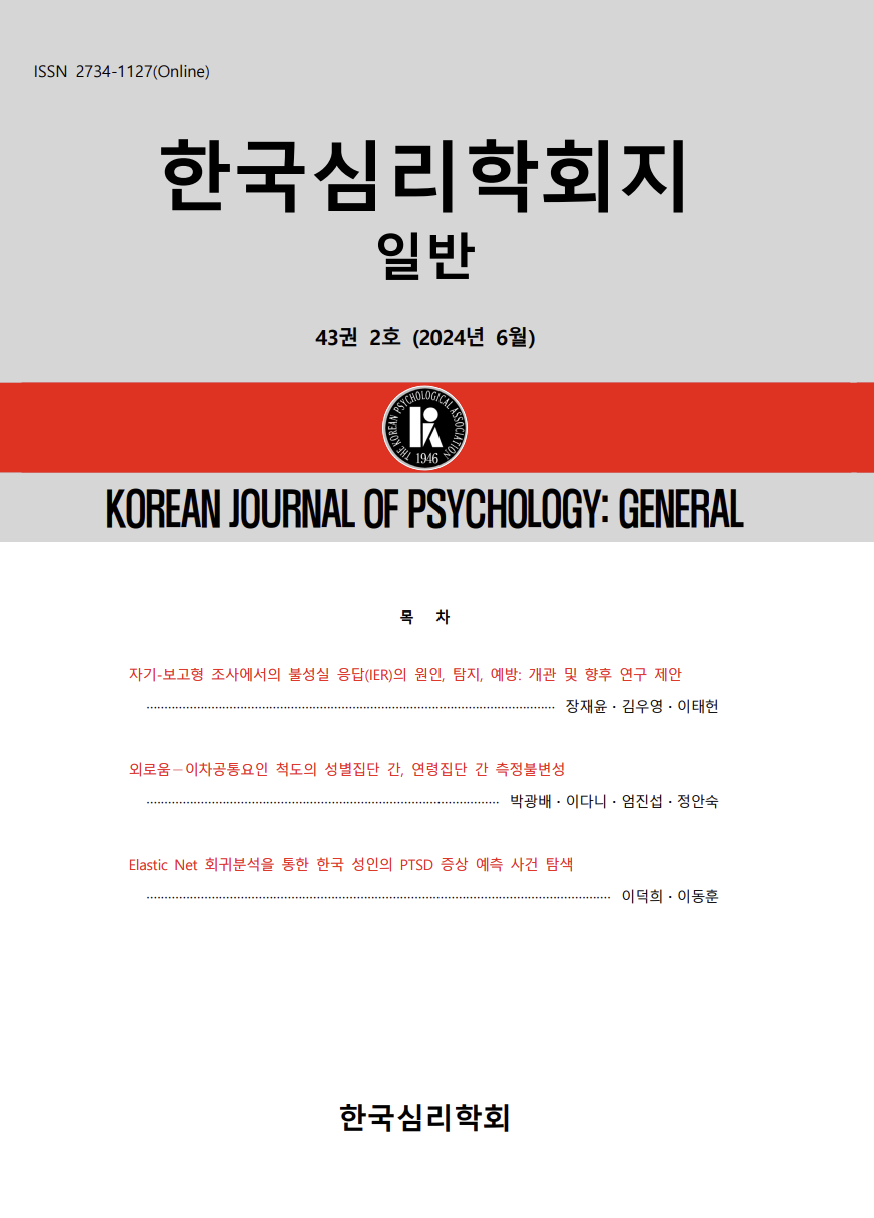Korean Journal of Psychology: General
- KOREAN
- P-ISSN1229-067X
- E-ISSN2734-1127
- KCI
 ISSN : 1229-067X
ISSN : 1229-067X
Browse Articles
- 2025 (Vol.44)
- 2024 (Vol.43)
- 2023 (Vol.42)
- 2022 (Vol.41)
- 2021 (Vol.40)
- 2020 (Vol.39)
- 2019 (Vol.38)
- 2018 (Vol.37)
- 2017 (Vol.36)
- 2016 (Vol.35)
- 2015 (Vol.34)
- 2014 (Vol.33)
- 2013 (Vol.32)
- 2012 (Vol.31)
- 2011 (Vol.30)
- 2010 (Vol.29)
- 2009 (Vol.28)
- 2008 (Vol.27)
- 2007 (Vol.26)
- 2006 (Vol.25)
- 2005 (Vol.24)
- 2004 (Vol.23)
- 2003 (Vol.22)
- 2002 (Vol.21)
- 2001 (Vol.20)
- 2000 (Vol.19)
- 1999 (Vol.18)
- 1998 (Vol.17)
- 1997 (Vol.16)
- 1996 (Vol.15)
- 1995 (Vol.14)
- 1994 (Vol.13)
- 1993 (Vol.12)
- 1992 (Vol.11)
- 1991 (Vol.10)
- 1990 (Vol.9)
- 1989 (Vol.8)
- 1988 (Vol.7)
- 1987 (Vol.6)
- 1986 (Vol.5)
- 1985 (Vol.5)
- 1984 (Vol.4)
- 1983 (Vol.4)
- 1982 (Vol.3)
- 1981 (Vol.3)
- 1980 (Vol.3)
- 1979 (Vol.2)
- 1976 (Vol.2)
- 1974 (Vol.2)
- 1971 (Vol.1)
- 1970 (Vol.1)
- 1969 (Vol.1)
- 1968 (Vol.1)
Vol.44 No.1
Abstract
When using a multilevel model to analyze experimental data, the results of hypothesis testing can vary depending on the random effects structure. Previous studies have shown that the likelihood ratio test (LRT) for selecting the random effect structure does not match the shape of the null distribution with the theoretical chi-squared distribution due to the parameter space constraints of the variance. In this study, we investigate the shape, the type 1 error rate, and convergence failure rate of null distribution of LRT to select random effects structures through Monte Carlo simulations. Before proceeding with this study, the validity of the methodology was secured by checking the shape of null distribution of LRT for testing fixed effects. We conducted simulations by manipulating the experimental design, number of participants, and number of items, and found that the mean, variance, 95th and 99th percentiles of null distribution of LRT for selecting random effects structures were smaller than the theoretical chi-squared distribution under all conditions. When LRT was performed using the theoretical chi-squared distribution, the type 1 error rate was smaller than .05 significance level. The convergence failure occurred frequently in models with complex experimental designs and correlation structure in the structure of the random effects. The caveats of choosing the model’s random effects structure were discussed for empirical researchers when using multilevel models to test for experimental condition effects.
Abstract
As many real datasets do not satisfy the normality assumption, the need for simulation studies related to nonnormality has arisen. To conduct such simulation studies, it is important to generate appropriate non-normal data. Although many non-normal data generation methods have been developed, there is a lack of studies that discuss the entire process of non-normal data generation. Therefore, this study offers guidelines that researchers can consider for conducting simulation studies by outlining the process of non-normal data generation with specified steps. Specifically, the non-normal data generation process will be discussed based on the power method, which is the most widely used technique for generating non-normal data, and the program and functions that researchers can utilize will also be examined. Furthermore, by providing a real example of non-normal data generation based on a two-factor CFA model along with the program code, we expect that this study will enhance understanding of the data generation process while providing tools that researchers can use.